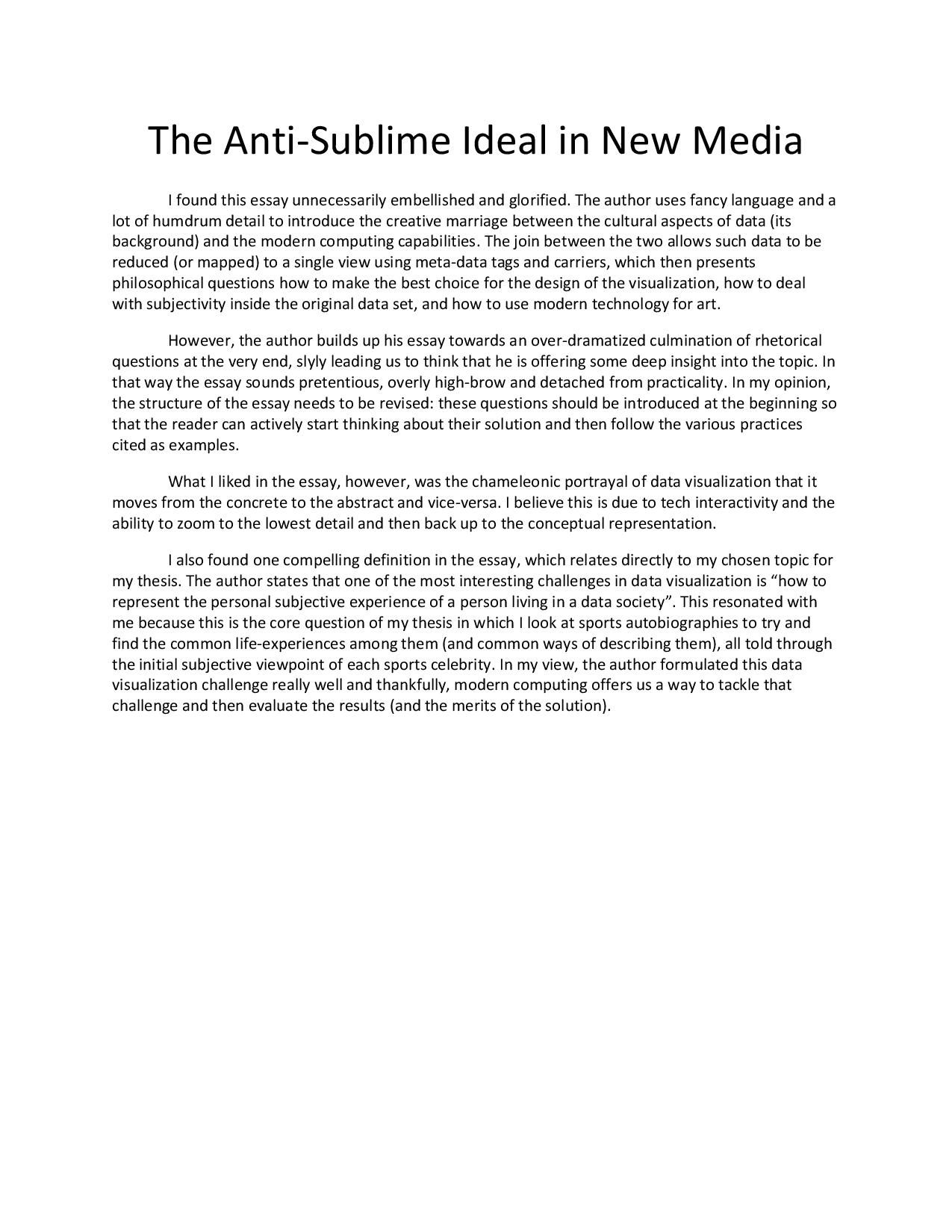This is a very interesting read as it draws on many historical events, figures, and technologies to make points about data visualization. Personally, I feel that anything which requires the eyes to read is a data visualization. (In fact, one may argue if brail is in fact a data visualization.) Traditionally, formulas and other scientific elements have been considered “true” data visualizations. However, as discussed by Lev Manovich, the term data visualization has been gradually changing. Perhaps someday we will even extend the notion of visualization past our own human senses. What do we think?
Visualization and Mapping
Lev Manovich raises some interesting questions and points in this section. Specifically, he questions the dimensionalities with which we live and use in data visualization. He emphasizes that we traditionally work with upto 4D typically. This section helped me recall our Parsons expedition to the United Nations in 2018. At the UN we were introduced to new technology that involved a 3D video but included smells, sounds, and touch sensations through the form of vests and burning incense along with the 3D. Adding the additional sensatory dimensions really changed the strictly 3D visualizations. Do including the other sensatory dimensions affect the underlying visualization? I think it did.
Media + Software = Meta-Media
In this discussion, Manovich states, “it is possible to think of all representational art as a kind of mapping: taking the wealth of an individual’s and/or a community’s experiences and reducing it to a single image, a narrative or another artistic structure.” He references a “groundbreaking mapping project by Art+Com is a virtual opera set whose parameters are interactively controlled by actors during the opera.” I feel that what he states is indeed a pattern. I’m always fascinated in what we express as alien in media, art, and literature, always has some likeness to what we know life to be here on earth. All expressions of the other are more similar to life than we realize. In many instances, seeing something truly alien would not be appreciated or respected even by humans. Would humans go to see two hours of dots moving across the page? Are all expressions of the other simply a reduction to our own lives as we know them on earth?
Data Modernism
Manovich states in this section that, “Mapping one data set into another, or one media into another, is one of the most common operations in computer culture, and it is also common in new media art.” He initiates the discussion referencing historical examples; and, then, discusses some of his favorite artists, for example, John Simon (New York). Manovich states, “His work is unique for a number of reasons. First of all, he makes explicit connections in his pieces between the new ideas of new media and various traditions, movements and figures of modern art, in particular Mondrian, Klee, and Sol Levitt. … Simon’s explicit and systematic explorations of conceptual linkages between new media and modern art are very important. … [Simon] uses artificial life, cellular automata and other computational techniques to create complex and nuanced images which combine figurative and abstract and explicitly insert themselves within the history of modernist visual research.”
Meaningful Beauty: Data Mapping as Anti-sublime
Lev argues that “The more interesting and at the end maybe more important challenge is how to represent the personal subjective experience of a person living in a data society.” He asks the question, of how to represent the huge volumes of data we experience in new ways. Lev states, “rather than trying hard to pursue the anti-sublime ideal, data visualization artists should keep in mind that art has the unique license to portray human subjectivity.” In effect, Lev is emphasizing the need to use new methods to represent data rather than simply relying on older traditional data libraries, which may not effectively unearth connections or emphasize dependencies on data.
